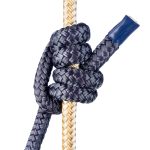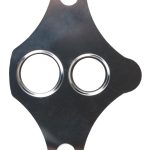Understanding Tire Air Pressure and Stability
Tire air pressure plays a crucial role in the stability of any vehicle, especially for the Piaggio MP3. Properly inflated tires ensure optimal contact with the riding surface, contributing significantly to the stability of the ride. Incorrect tire air pressure not only impacts stability but also affects the handling and overall performance of the vehicle.
When tire air pressure is too low, tires may flex excessively, which can lead to decreased stability. This could cause challenges in handling, especially during sharp turns or sudden maneuvers, making the ride less predictable and increasing the risk of an accident. Conversely, high pressure can result in a harsh ride as it reduces the grip on the road, impeding the stability of the Piaggio MP3 and potentially compromising safety.
Have you seen this : Essential Guide: Safely Lubricating Steering Bearings on Your Triumph Thruxton R
For optimal riding safety, it’s important to frequently check and maintain the recommended tire air pressure to ensure a smooth and stable experience. This not only extends the lifespan of the tires but also enhances the stability and safety of every ride. Proper inflation is key to achieving the perfect balance between performance and stability for your Piaggio MP3.
Recommended Tire Pressure Settings for Piaggio MP3
Proper tire pressure is crucial for the performance and safety of your Piaggio MP3. Having the right pressure ensures better handling and fuel efficiency.
Also to discover : Step-by-Step Guide to Installing a GPS Tracker on Your Suzuki V-Strom 1000 for Ultimate Theft Protection
Optimal Pressure for Normal Riding Conditions
For normal riding conditions, it is recommended that Piaggio MP3 tires be inflated to a standard pressure. This pressure typically falls within the manufacturer’s guidelines, ensuring optimal traction and comfort. Regularly checking tire pressure helps maintain vehicle stability and efficiency.
Adjustments for Different Weather and Road Conditions
Adjusting the tire pressure according to operating conditions like weather and road quality can enhance safety. In colder climates, a slight increase in pressure can compensate for the contraction of air inside the tires. Conversely, in hotter conditions, a decrease might prevent overinflation due to expansion. Adjustments should also be considered for various road surfaces, as rough terrains may require different settings for stability.
Manufacturer Guidelines for Tire Pressure
The Piaggio MP3 manufacturer provides specific recommendations for tire pressure settings. These guidelines consider the operating conditions and the vehicle’s unique design. Always refer to the owner’s manual for these detailed instructions, ensuring tires are neither underinflated nor overinflated, maintaining the balance between performance and safety. Consistent adherence to these guidelines will extend the life of your tires.
Measuring and Adjusting Tire Pressure
Ensuring optimal tire performance starts with measuring tire pressure accurately. Begin by using a high-quality pressure gauge, which is vital for precise readings. Digital and analog gauges are both suitable; however, digital models typically offer higher precision.
Step-by-Step Instructions
-
Park the Vehicle: Ensure it’s on a level surface and let the tires cool down for a few hours to avoid incorrect readings.
-
Access the Valve Stem: Remove the cap from the valve stem on one tire.
-
Attach the Pressure Gauge: Firmly press the gauge onto the valve stem. A hissing sound indicates a misfit – reposition to avoid air loss. The gauge will display the current tire pressure.
Tools Required
- Pressure Gauge: Essential for measuring tire pressure.
- Air Compressor: Useful if inflation is needed.
- Valve Caps: Keep them handy to secure after measurement.
Adjusting Tire Pressure Best Practices
Regularly adjust tire pressure to match the vehicle’s recommended PSI, usually found in the owner’s manual or on the driver’s side door jamb. During inflation, pause to measure pressure periodically, preventing over-inflation. If tires are overfilled, use a pressure gauge with a release valve to gradually let air out.
Common Issues Related to Improper Tire Pressure
Incorrect tire pressure is a frequent culprit behind many Piaggio MP3 problems. Recognising and rectifying common tire issues can help in maintaining optimal performance and safety.
One of the primary consequences of improper tire pressure is under-inflation. This condition may lead to uneven tire wear, reduced fuel efficiency, and increased friction, ultimately causing tires to overheat. Over time, this could result in tire failure. Conversely, over-inflation can reduce the contact patch between the tire and the road, adversely affecting traction and causing premature wear in the center tread.
Signs that your tire pressure might be incorrect include a noticeable change in vehicle handling, vibrations during rides, and frequent loss of air. Additionally, if the Piaggio MP3 doesn’t steer as efficiently or if the tires appear visibly under or over-inflated, it’s crucial to address this immediately.
As a preventative measure, regular checks with a reliable pressure gauge can help mitigate tire-related problems. Ensure pressure aligns with the manufacturer’s specifications, typically found in the vehicle’s manual. By integrating these checks into routine maintenance, riders can extend tire life, boost fuel efficiency, and enhance safety.
Tips for Maintaining Tire Health on Your Piaggio MP3
Maintaining the tire health of your Piaggio MP3 ensures safety and enhances tire longevity. Start with regular tire inspections. Checking your tires before rides helps identify wear or damage early, prolonging tire life and enhancing safety. Look for signs such as uneven wear or embedded debris that might indicate a need for maintenance or replacement.
Temperature changes significantly influence tire pressure, a critical aspect of tire maintenance. As temperatures drop, the air inside the tires contracts, reducing pressure. Conversely, heat causes expansion, potentially leading to overinflated tires. Use a reliable gauge to check tire pressure regularly, especially during season changes, to ensure optimal performance and safety.
Proper tire rotation and alignment are equally crucial. Aligning the tires correctly ensures even contact with the road, reducing irregular wear. Regular rotation helps distribute wear evenly across all tires, prolonging their life. Follow a consistent maintenance schedule recommended by experts to keep tires in top condition.
By adhering to these tips, you enhance the performance and reliability of your Piaggio MP3, ensuring a smooth and safe ride every time. Prioritize these maintenance practices to ensure your Piaggio MP3 remains in excellent condition.
Visual Aids and Troubleshooting
In the world of automobile maintenance, visual aids serve as invaluable tools for understanding and addressing tire pressure issues. These aids simplify complex concepts, making it easier for all vehicle owners to maintain optimal tire performance.
Charts for Recommended Tire Pressures
Charts are crucial visual aids that provide detailed information about recommended tire pressures for various types of vehicles. Typically, these charts can be found in the vehicle owner’s manual or on the inside panel of the driver’s door. They clearly indicate the optimal tire pressure for different load conditions, ensuring you achieve maximum fuel efficiency and tire durability.
Diagrams Illustrating Tire Pressure Effects
Diagrams can effectively illustrate the consequences of incorrect tire pressure. Over-inflation and under-inflation have distinct effects on tire wear and handling. These diagrams help in identifying specific wear patterns that might indicate too much or too little air. Understanding these patterns enables proactive adjustments, potentially preventing more severe issues.
Troubleshooting Guide for Common Tire Issues
A well-crafted troubleshooting guide is essential for resolving common tire pressure issues. This guide would typically include symptoms such as uneven tread wear or a vibrating steering wheel, potential causes, and step-by-step solutions. By following these guides, drivers can address problems quickly, promoting safer driving conditions.











